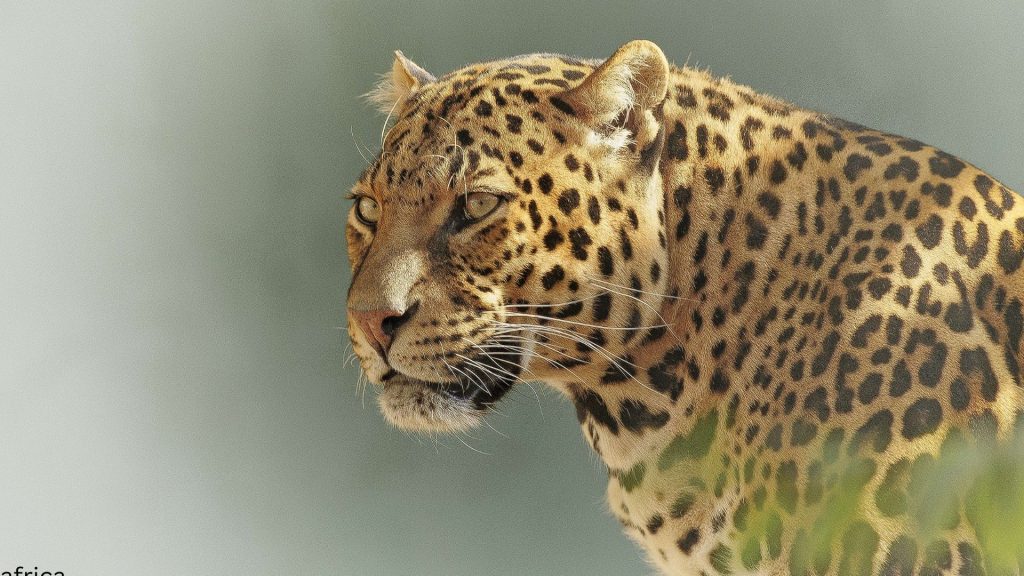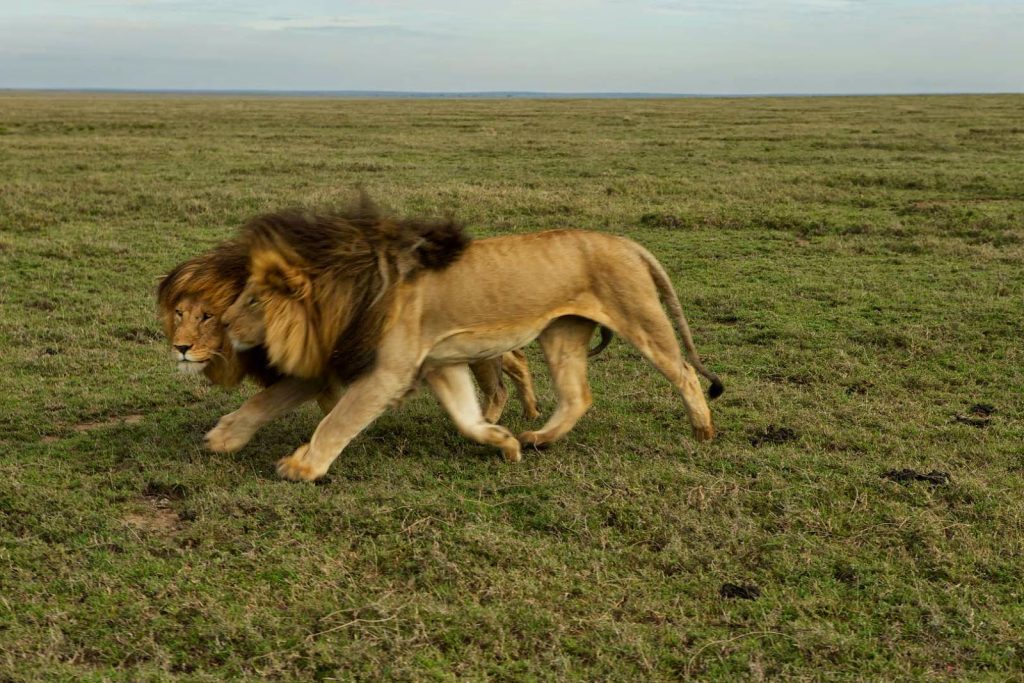Tanzania Safari in October
Home » Tanzania Safari in October
Tanzania in October
October is when Tanzania’s weather is mostly clear skies and sunny days. Enjoy lakeside views, beach bathing and swimming, and excellent wildlife safaris. From hiking to the top of the highest mountain in Africa—Mount Kilimanjaro—to the thrill that comes with the Bagamoyo Festival, taking a trip to Tanzania in October is a wild dream come true.
October is a fantastic month to visit Tanzania. Along the beautiful Swahili coastline, the weather is perfect for a tropical beach getaway or island hopping along the Zanzibar archipelago. Inland, safari goers will witness the dramatic final month of the dry season, where a vast array of wildlife never strays far from the last remaining water sources. At the same time, those with summit ambitions will relish trekking Mount Kilimanjaro or the wilder, less frequented Mount Meru in good weather. Or, combine any one of those options for a holiday of a lifetime. With world-class accommodation, exceptional hospitality and fusion food, you’re in for a treat.
Tanzania is known as the jewel of East Africa because of its sheer abundance of nature and wildlife. From the stunning views of the Indian Ocean to the highest point in the whole of Africa, Tanzania is a basket of nature’s beauty. Tanzania is famous for the density of fauna it is home to, making it an interesting destination for eco-tourists. Almost a third of Tanzania is protected as a natural habitat for more than 430 variety of species of wildlife. Visiting Tanzania in October gives the best opportunity to cross paths with thousands of species of wildlife in any of the 14 National Parks of the country.
Weather in Tanzania in October
Tanzania has a tropical climate, which means there are no winter and summer seasons. Instead, the country experiences two rainy and two dry seasons.
In general, October offers warm, pleasant, and dry weather in Tanzania. It marks the end of the dry season that started in June, making it an excellent time for a safari as the sparse vegetation makes it easier to spot various animals and birds along the river banks. The coastal regions are warm with low humidity, creating idyllic weather for a beach retreat.
Temperatures in Tanzania remain consistently warm in October. However, early morning game drives can get chilly, so it’s recommended to pack a warm layer that can be taken off as morning temperatures rise through the day.
If you plan to stay at altitude, temperatures and rainfall can vary significantly. For instance, if you visit the UNESCO World Heritage Site of Ngorongoro Crater, you will spend the night on the rim of the largest unbroken caldera in the world. At 2300m above sea level, temperatures fall rapidly at night, and frost occurs regularly.
From mid to the end of October, Tanzania undergoes a transition period marking the start of the short rains in East Africa. However, the likelihood of precipitation is unpredictable and may not happen until November. In case it rains, it typically occurs in afternoon storms and should not affect your experience. To experience the end of the dry season in the midst of nature will awaken all of your senses.
Average temperatures in Tanzania in October
In Tanzania, temperatures during October typically range from 25°C to 30°C (77°F to 86°F) along the coastline and inland. However, in higher altitude areas, temperatures can drop to 15°C to 20°C (59°F to 68°F), which can feel quite chilly. Despite this, it will still be warm in the sun.
October marks the end of a five-month-long dry season that begins in June. During the dry season, the temperature gradually rises as each month passes until it peaks in October. Towards the middle to late October, trade winds bring in moist air, leading to a phenomenon known as the short rains. These rains last from November to mid-December, and temperatures remain relatively stable throughout this time, with no significant decrease in temperature.
Why is October so special for a safari in Tanzania?
For the wildlife, October is a month of great challenge and hope. Five months have passed since the last rain gave life to Tanzania’s national parks, and the landscapes are at their driest. Yet the short rains that arrive, often unpredictably, in November are tantalisingly close.
At this time of year, water is scarce, forcing predators and prey into close proximity as they congregate near the remaining water sources. As rivers diminish to small trickles, herbivores seem to mass into mega herds, and large flocks of birds, such as Quelea and Bee-eaters, arrive in synchronised clouds to drink from muddy hippo pools.
Every day that passes without rain means that the herds of animals must travel long distances to and from the river in search of food. This results in the formation of well-worn tracks which animals of all sizes use to travel along. Warm winds whip up dust devils that spiral high into the sky, adding to the unique atmosphere of the season.
The Hamerkop, also known as the legendary “Lightning Bird”, is believed to bring rain and can be spotted pacing along the river’s edge as if performing a rain dance. At the same time, elephants, who are thought to sense the vibrations of distant storms through their large fleshy pads, communicate through rumbling calls and seem to announce the arrival of the rains.
Towards the end of October, storm clouds form, providing hope for the imminent respite to the parched land. Visiting Tanzania on a safari in October will allow visitors to witness the struggle of life, where the weak fall prey to predators and all living things await the coming rains in anticipation. Witness the end of the dry season and experience the dramatic sights, sounds, and smells of nature.
Why Visit Tanzania in October?
If you choose to visit Tanzania in October, there are many activities you can enjoy this month. Although the weather is hot, you can still partake in many outdoor activities once you slap on a little sunscreen. Here are some reasons why you should visit in October:
- Shoulder season: Depending on the weather, October usually signals the end of the dry, high tourist season, and the start of the shoulder season. This means you’ll likely get the great weather and wildlife spotting but with thinner crowds than in August or September. If you’re lucky you might even get a few deals on prices.
- Dry season wildlife viewing: October is the perfect time to savor the breathtaking views and abundant natural beauty of Tanzania given the sunny days and thin foliage that comes with it. It is easier to spot wildlife quickly as many animals are gathered around the lakes, making for great pictures. The glorious Serengeti National Park, which houses the largest population of lions in Africa, could be your first stop.
- Bagamoyo Arts Festival: The Bagamoyo Arts Festival is one of the most important cultural festivals in Tanzania that usually starts in the middle of October. This is a week-long annual event at the Bagamoyo College of Art. This festival allows college students to display their skills and pick up others. It is a place where locals and foreigners meet to enjoy Tanzania’s culture, dance, music, and theater.
- Trekking season: October is one of the best seasons to trek in Tanzania; there are no slippery slopes, heavy rains, or cold temperatures. Trails are dry and rain is scarce. A perfect month for climbing Mount Kilimanjaro or Mount Meru.
- Scuba diving and snorkeling: Bring your equipment if you visit Tanzania in October. Visibility is at its peak during the dry season, so it’s perfect for scuba diving and snorkeling.
What to wear on a Tanzania safari
By now, you will have discovered that October is a pleasant month to visit Tanzania, but you may be wondering what to wear. Here are our main tips:
- Keep it light, soft and simple.
- Soft, light-coloured clothing with long sleeves and trousers is recommended to shield from the sun and biting insects.
- Avoid camouflage and bright colours, including dark blue and black.
- Bring warm clothes for nighttime and early morning game drives.
- Sun protection, such as hats and shades, is highly recommended.
- If you plan to wear flip-flops, please bring closed shoes for game drives and sitting around the campfire at night.
- Pack your swimsuit for a refreshing swim in one of the many lodge pools.
- Pack something smart to enjoy a classic safari dinner.
- If you are visiting Zanzibar, it is customary to dress modestly by covering your shoulders and knees in public places.
Going to Tanzania in October is a great option if you want to enjoy excellent wildlife sightings but see slightly fewer other tourists than between July and September. Be aware that the most popular safari destinations will still see a fair number of visitors though.
Get in touch with us to plan your Tanzania holiday in October!



